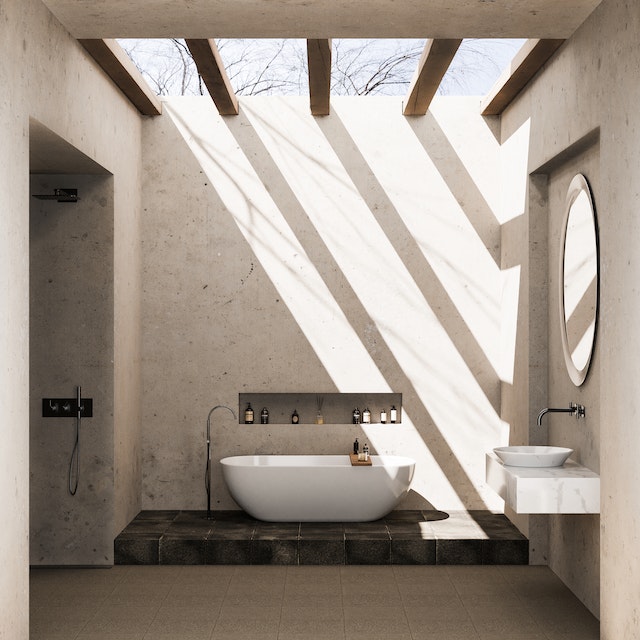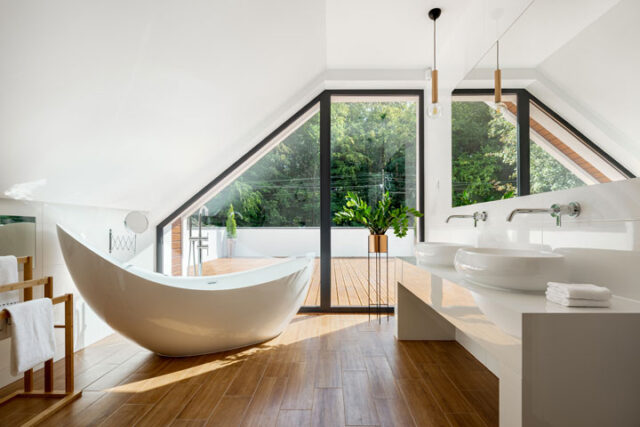When we contemplate the essence of eco-friendly design in architecture, natural light emerges as a pivotal element, especially in the diverse and dynamic Australian context.
Let’s delve into how the Australian design landscape has historically utilized and continues to harness the power of sunlight to foster sustainable and harmonious living environments.
The Historical Significance of Natural Light in Architecture
Historically, natural light has always been a cornerstone of architectural practices worldwide.
In Australia, this significance is even more pronounced, given the country’s rich history and its unique relationship with its natural surroundings.
Traditional Aboriginal Dwellings: Embracing the Sun
Long before European settlement, Indigenous Australians ingeniously fashioned their homes to leverage sunlight effectively.
Using local materials, their dwellings not only provided shelter but also balanced warmth and coolness by considering the sun’s movement.
This ancestral wisdom showcased an early understanding of sustainable living, moulded by the natural world.
Colonial Design: Windows, Verandas, and Light Utilisation
With the advent of the colonial era, Australian architecture saw a shift. However, the emphasis on natural light persisted.
Wide verandas and large windows became hallmarks of colonial homes, serving dual purposes of ventilation and ample sunlight, revealing an early synergy between European influences and the needs dictated by the Australian climate.
Understanding the Benefits of Natural Light
Natural light is more than just an aesthetic element in design; it brings with it a plethora of benefits that resonate with the essence of eco-friendly living.

Health and Wellbeing: Sunlight’s Impact on Mood and Productivity
Sunlight, with its Vitamin D richness, is vital for human health. Beyond the physiological benefits, it plays a pivotal role in elevating mood, reducing depression, and enhancing productivity.
Spaces bathed in natural light foster well-being, making them integral in residential and workspace designs.
Energy Conservation and Efficiency
Integrating natural light reduces dependency on artificial lighting, subsequently decreasing energy consumption.
In a world grappling with energy conservation challenges, harnessing sunlight is a step forward toward a sustainable future.
Reduction in Carbon Footprint
A direct consequence of reduced artificial lighting and heating is a significant drop in carbon emissions.
By embracing natural light, homes and commercial spaces can significantly lower their carbon footprint, championing a green and sustainable future.
Natural Light in Contemporary Australian Design
Contemporary Australian design is experiencing a renaissance in its approach to natural light.
Modern architects and designers recognize its multifaceted advantages, blending aesthetics, functionality, and sustainability in unique ways.
Design Innovations Enhancing Light Penetration
Advancements in design have paved the way for more intricate and deliberate incorporation of sunlight. These techniques are transforming the very fabric of modern Australian homes and commercial spaces.
Skylights and Roof Windows
Skylights and roof windows have become synonymous with contemporary design.
Offering a direct portal to the sky above, they usher in an abundance of daylight, transforming interiors into bright, airy spaces, while also providing an opportunity for passive heating during cooler months.
Clerestory Windows: Bringing Light into Modern Homes
Positioned high on walls, clerestory windows serve a dual purpose. They allow the ingress of sunlight without compromising privacy, making them perfect for urban settings.
These windows, often seen in modernist and eco-friendly designs, are a testament to the fine balance between aesthetics and functionality.
Open Plan Designs: Breaking Barriers to Light Flow
Open-plan layouts have gained immense popularity in contemporary Australian homes.
Eliminating barriers, these designs facilitate an uninterrupted flow of natural light, fostering a sense of openness and continuity with the outdoors.
Materials and Techniques for Optimising Natural Light
In the quest for perfect luminosity, the materials employed play a crucial role. The choice of materials can amplify light, create captivating interplays of shadows, or provide a gentle diffused glow.
Reflective Surfaces and Their Role in Light Distribution
Reflective surfaces, from polished floors to mirrored furnishings, act as light enhancers.
They bounce sunlight throughout spaces, ensuring even distribution and adding an element of depth and spaciousness to interiors.
Translucent Materials: The Perfect Balance Between Privacy and Light
Materials like frosted glass or diffused polycarbonate panels strike an ideal balance.
They allow for abundant light transmission while maintaining privacy, making them invaluable in spaces where both aspects are paramount.

Landscaping Techniques for Maximising Daylight Penetration
Landscaping isn’t just about exterior aesthetics; it’s a strategic tool.
Thoughtfully positioned trees or shrubs can filter harsh sunlight, while water bodies or light-toned pavements can reflect light, enhancing their penetration into built structures.
Challenges and Solutions in Harnessing Natural Light
While the advantages of natural light are many, it’s essential to navigate the challenges it poses, ensuring that homes remain comfortable and energy-efficient year-round.
Overheating and UV Radiation: Protecting Your Living Spaces
In the peak of Australian summers, direct sunlight can lead to overheating.
Innovative solutions like UV protective films, external shading devices, and strategic landscaping are employed to mitigate this, ensuring interiors remain cool and UV exposure is minimized.
Balancing Natural Light with Energy Efficiency
Maximizing natural light should not come at the expense of energy efficiency.
High-performance glazing, thermal breaks, and automated blinds are some of the solutions adopted to strike a balance, ensuring spaces are bright yet energy-optimized.
Future Trends: The Role of Natural Light in Upcoming Designs
The trajectory of design is clear: natural light will continue to be a focal point.
As technology and innovation propel us forward, the symbiosis between architecture and sunlight promises exciting possibilities.
Smart Home Technologies and Light Control
From automated blinds to tint-changing windows, smart technologies are set to revolutionize how we interact with natural light.
These innovations will provide homeowners with unparalleled control, ensuring optimal light levels at all times.
The Evolution of Window Technologies
Tomorrow’s windows will be more than mere openings. With advancements in glazing, frames, and integrated technologies, they will play a central role in energy efficiency, light modulation, and indoor comfort.

The Importance of Sustainability in Australian Architecture
As global awareness about sustainability grows, Australian architecture is poised to lead, showcasing how design rooted in nature, especially in harnessing sunlight, can pave the way for a brighter, greener future.
Conclusion: The Bright Future of Eco-Friendly Design in Australia
From its Indigenous origins to its contemporary manifestations, Australia’s tryst with natural light is a testament to its enduring legacy in design.
As we stand at the intersection of tradition and innovation, the role of natural light in shaping sustainable, eco-friendly designs remains unequivocal.
With a commitment to the environment and a passion for design, Australia is lighting the way toward a radiant, sustainable future.





